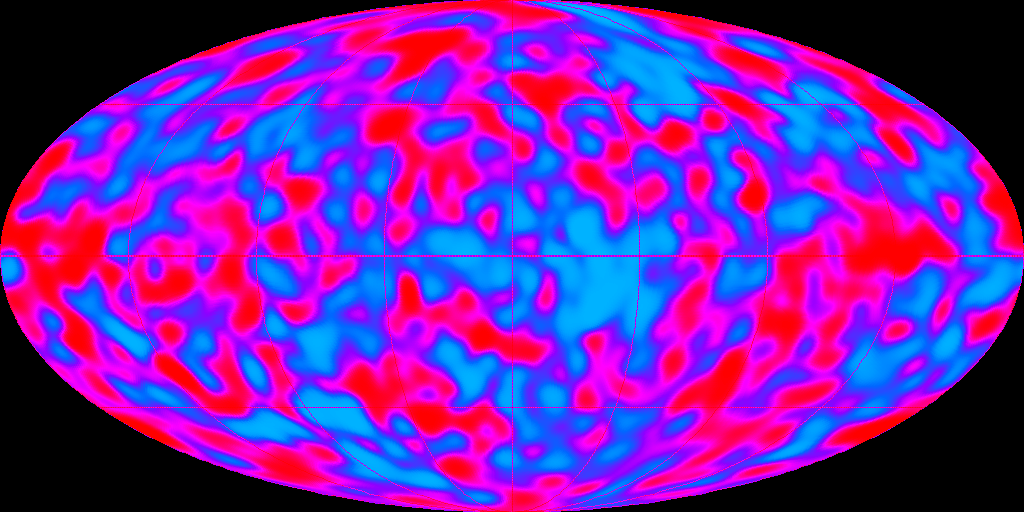
Map of the sky photographed by COBE, the COsmic Background Explorer. The different colours represent different temperatures within a range of just +/- 150 micro-Kelvin around ~3 Kelvin.
Most scientists today believe that the Universe was born about 15 billion years ago in a hot Big Bang and that it has been expanding and cooling ever since. The evidence for this is compelling. When we look out into space, we see galaxies rushing away from each other, and scientists have even measured the afterglow of the Big Bang. No matter where we look in the Universe, the temperature of space seems to be the same, about 3 Kelvin. This is exactly what you would expect if everything began in a dense point, and it means that the Universe was once hotter. Much hotter. Since heat is a form of energy, increasing the energy of particle collisions in accelerators like LEP, is equivalent to probing back in time ever closer to the Big Bang. In other words, particle collisions recreate the conditions of the Big Bang.

Map of the sky photographed by COBE, the COsmic Background Explorer. The different colours represent different temperatures within a range of just +/- 150 micro-Kelvin around ~3 Kelvin.